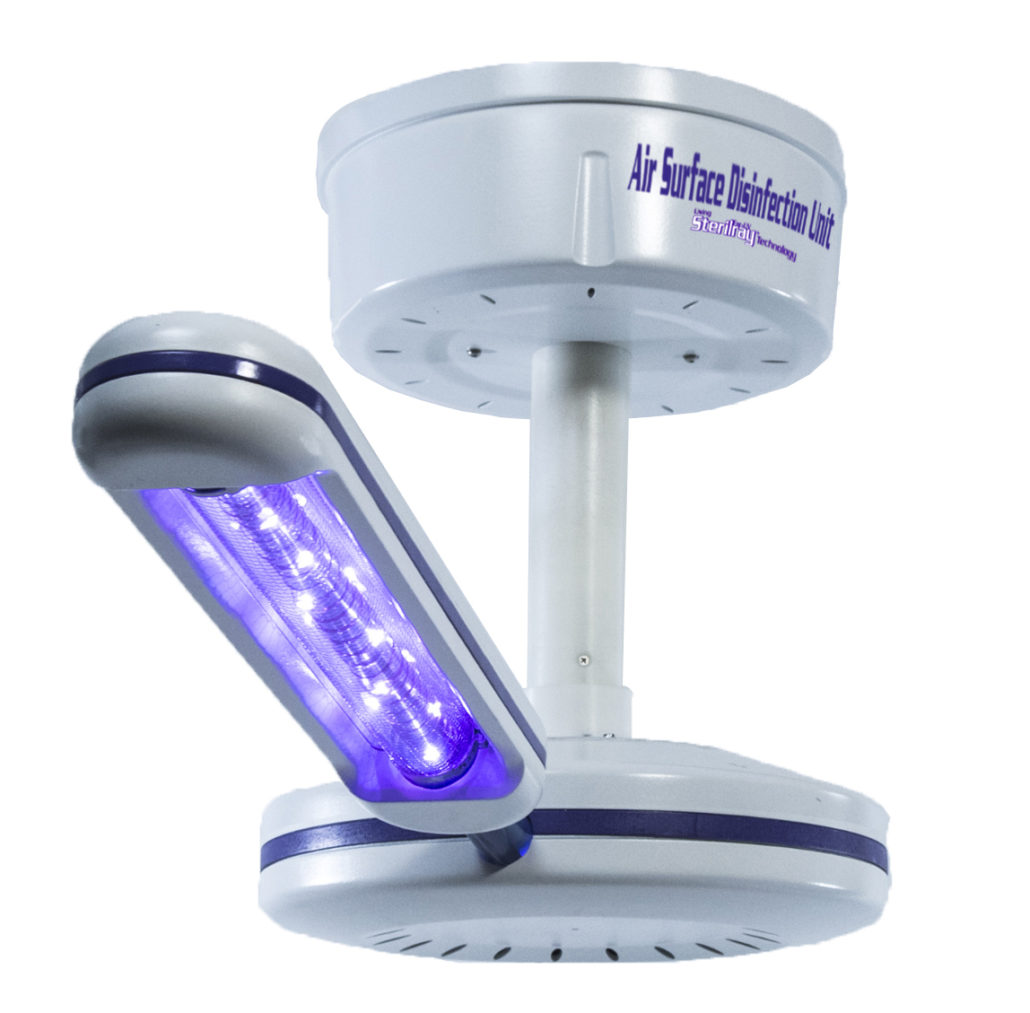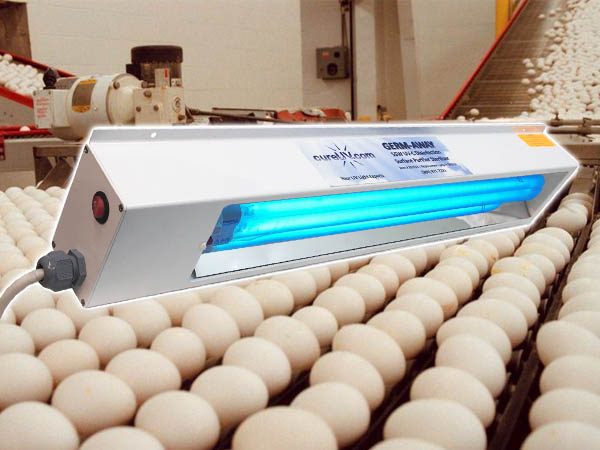Unveiling the Conveniences of UV Disinfection: Making Certain Sanitized and tidy Spaces
In the age of enhanced awareness surrounding hygiene and tidiness, the importance of efficient sanitation techniques can not be overemphasized. While traditional cleansing methods have actually long been trusted, improvements in technology have actually introduced an ingenious solution that makes certain clean and disinfected rooms: UV disinfection. By using the power of ultraviolet light, this method has actually gained recognition for its capacity to get rid of unsafe pathogens and supply an extensive sanitization procedure. The benefits of UV disinfection prolong much past its efficiency. This conversation will discover the science behind UV disinfection, its efficiency on numerous virus, its applications in various setups, and the benefits it holds over conventional techniques. Furthermore, we will certainly explore the safety and security considerations that should be considered when implementing UV disinfection. Prepare to discover a new dimension of cleanliness and discover the untapped capacity of UV disinfection.

The Science Behind UV Sanitation
UV disinfection is a clinically tested approach that utilizes ultraviolet light to remove dangerous microbes from surfaces and water. The science behind UV disinfection depends on the capacity of UV-C light to damage the DNA and RNA of microbes, providing them unable to recreate and triggering their ultimate fatality. UV-C light drops within the wavelength series of 200 to 280 nanometers, which is highly efficient in damaging bacteria, viruses, and other virus.
When exposed to UV-C light, the genetic material of bacteria takes in the power from the light, leading to the development of thymine dimers. These dimers disrupt the normal replication and transcription processes of the microorganisms, inhibiting their ability to replicate and endure (uv surface disinfection). The DNA and RNA damages created by UV-C light is dangerous to the microbes, making UV disinfection a reliable and effective method for eliminating a vast array of microorganisms
UV sanitation is especially useful in atmospheres where standard chemical disinfectants might be unwise or inefficient. It is a non-chemical method that does not leave any kind of deposits or dangerous byproducts, making it safe for use in food processing, healthcare facilities, water treatment plants, and different other markets. Moreover, UV disinfection is environmentally friendly, as it does not add to the advancement of antibiotic-resistant germs or various other harmful toxins.
Performance of UV Disinfection on Virus
The efficiency of UV sanitation in getting rid of virus has actually been extensively researched and verified in numerous clinical studies. UV radiation has the capability to inactivate a large range of microbes, including bacteria, fungis, and viruses, by damaging their DNA or RNA. This stops them from reproducing and causing infections.
One research study released in the American Journal of Infection Control found that UV disinfection worked in minimizing the presence of numerous drug-resistant microorganisms in medical facility areas. Another research study performed by the National Institute for Occupational Security and Wellness showed that UV disinfection was able to get rid of 99.9% of the flu virus on surface areas.
UV disinfection has likewise revealed assurance in combating the spread of healthcare-associated infections (HAIs) According to a study published in The Lancet, the usage of UV-C light along with typical cleaning protocols dramatically lowered the incidence of HAIs in a health center setting.
Furthermore, UV disinfection has shown to be efficient versus arising virus, such as the extreme intense respiratory system disorder coronavirus 2 (SARS-CoV-2), which creates COVID-19. A study conducted by the National Emerging Infectious Illness Laboratories demonstrated that UV-C light can suspend visit the website the infection on surface areas within seconds.
Applications of UV Disinfection in Different Settings
With its proven effectiveness in eliminating virus, UV disinfection has found applications in a variety of setups. Among one of the most typical areas where UV disinfection is used is in healthcare centers. UV modern technology is made use of to decontaminate person areas, running spaces, and other high-touch surface areas, reducing the threat of healthcare-associated infections. In enhancement, UV sanitation is also being executed in food handling plants and restaurants to ensure the safety of food and prevent the spread of foodborne health problems. UV sanitation is also helpful in water therapy plants, where it is utilized to kill unsafe microorganisms and offer risk-free alcohol consumption water.
Another vital application of UV sanitation is in the air purification industry. UV air purifiers are made use of in residential, business, and commercial setups to eliminate air-borne bacteria, viruses, and mold and mildew spores. This technology is specifically valuable in atmospheres where individuals are more vulnerable to breathing infections, such as health centers, colleges, and office complex.
Additionally, UV disinfection is significantly being used in mass transit systems, such as buses and trains, to maintain clean and sanitized areas for passengers. UV light is employed to decontaminate surface areas and air inside the vehicles, reducing the risk of spreading out transmittable conditions.
Benefits of UV Disinfection Over Traditional Methods
In contrast to typical approaches, UV sanitation provides a variety of unique benefits that make it a more effective option in various industries and setups. One considerable advantage is its effectiveness against a large array of microorganisms, consisting of fungi, microorganisms, and infections. Unlike chemical anti-bacterials that might have restricted efficacy versus specific pathogens, UV sanitation is a non-selective process that can kill or suspend a wide spectrum of unsafe microorganisms.
Another advantage of UV sanitation is its capability to offer efficient and rapid sanitation. Traditional sanitation methods usually need longer get in touch with times or multiple steps to accomplish the desired level of disinfection. In contrast, UV light can provide immediate read this and constant sanitation, lowering downtime and enhancing performance in various applications.
UV sanitation likewise supplies a safe and environmentally friendly alternative to typical sanitation methods. uv surface disinfection. Unlike chemical agents, UV light does not leave behind any type of unsafe residues or spin-offs, making it appropriate for use in sensitive environments such as food processing centers, health care setups, and water therapy plants
Furthermore, UV sanitation is an economical service over time. While the upfront investment for UV disinfection systems may be more than standard techniques, the operational expenses are usually reduced. UV lamps have a long life expectancy and call for very little upkeep, leading to lowered labor and substitute expenses.
Safety And Security Factors To Consider for UV Sanitation
Taking into consideration the possible hazards related to UV sanitation, it is vital to address the safety factors to consider associated with implementing this modern technology. UV sanitation makes use of ultraviolet light to eliminate or suspend microbes, making it an effective method for sanitizing numerous surface areas and things. It is essential to understand that UV radiation can likewise position dangers to human wellness if proper safety procedures are not followed.
Most importantly, direct exposure to UV radiation can create injury to the skin and eyes. Extended direct exposure can cause sunburn, skin damage, and even an increased risk of developing skin cancer. Consequently, it is crucial to make certain that UV sanitation systems are properly confined and outfitted with safety and security features such as automated shut-off devices or activity sensing units to stop unexpected exposure.

In addition, proper training and education are vital for those in charge of running UV disinfection systems. They must recognize the possible threats, comprehend the safety and security methods, and recognize how to take care of and keep the devices appropriately.
Final Thought
UV disinfection can be applied in various settings, consisting of medical care facilities, food processing plants, and water treatment systems. Compared to traditional methods, UV sanitation has advantages such as faster disinfection times, minimal chemical usage, and no unsafe results.
UV sanitation is a scientifically tried and tested approach that makes use of ultraviolet light to get rid of damaging bacteria from surfaces and water. The DNA and RNA damage created by UV-C light is deadly to the microbes, making UV sanitation a effective and reliable method for killing a large array of microorganisms.
Another benefit of UV disinfection is its ability to give efficient and fast disinfection. UV sanitation uses ultraviolet light to eliminate or inactivate microorganisms, making it a reliable technique for disinfecting different surface areas and objects. Compared to traditional techniques, UV sanitation has benefits such as faster sanitation times, very little chemical usage, and no damaging results.